When Feline gave birth to two cubs on November 4th, 2015, the other female Felicia was introduced already after a few days as part of the WCW leopardproject and “experiment” to have the leopards living as a group or Pride, to see what’s possible and what isn’t. To show the other side of the leopard.
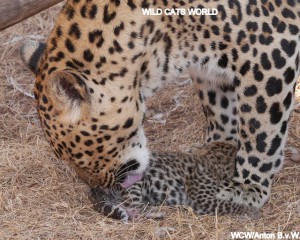 Felicia Immediately started co-mothering Feline’s cubs and was allowed to do so. It happened so that Felicia also was pregnant herself. For almost 2 months they happily lived together (also the males were shortly introduced which went super as well), until disaster stroke and one of the cubs (Kali) sadly died due to an unfortunate incident. When Feline was occupied with the dead cub, first grooming it, then starting to pace up and down with it, and at last partly eating it (like always in nature) Felicia took Olive to the other side and kept her safe there. Felicia also clearly was not herself. After the remains of poor Kali were cleared, Feline started searching and calling for a long time and she clearly had a trauma, which sadly also resulted in her not being able to co-mother Felicia’s cub the first months (even though she was present at the birth, January 3rd 2016, and took care of Solo when Felicia’s second cub didn’t come out as well being a breech-birth…legs first), as she clearly wanted this little boy as a replacement for her lost Kali, so she kidnapped the boy whenever she got the chance. Felicia didn’t mind the first time but the next times Feline took off with little Solo, she got protective, and they were fighting over the little boy so that we were very worried it might get hurt. Felicia is still visiting Feline and little Olive but for a little while longer we keep Solo away from Feline, until he is big enough not to carry around (to be kidnapped..) any longer. The daddies Felipe and Felix are both very kind, gentle and patient to the little ones. Very exceptional to see.
Felicia Immediately started co-mothering Feline’s cubs and was allowed to do so. It happened so that Felicia also was pregnant herself. For almost 2 months they happily lived together (also the males were shortly introduced which went super as well), until disaster stroke and one of the cubs (Kali) sadly died due to an unfortunate incident. When Feline was occupied with the dead cub, first grooming it, then starting to pace up and down with it, and at last partly eating it (like always in nature) Felicia took Olive to the other side and kept her safe there. Felicia also clearly was not herself. After the remains of poor Kali were cleared, Feline started searching and calling for a long time and she clearly had a trauma, which sadly also resulted in her not being able to co-mother Felicia’s cub the first months (even though she was present at the birth, January 3rd 2016, and took care of Solo when Felicia’s second cub didn’t come out as well being a breech-birth…legs first), as she clearly wanted this little boy as a replacement for her lost Kali, so she kidnapped the boy whenever she got the chance. Felicia didn’t mind the first time but the next times Feline took off with little Solo, she got protective, and they were fighting over the little boy so that we were very worried it might get hurt. Felicia is still visiting Feline and little Olive but for a little while longer we keep Solo away from Feline, until he is big enough not to carry around (to be kidnapped..) any longer. The daddies Felipe and Felix are both very kind, gentle and patient to the little ones. Very exceptional to see.
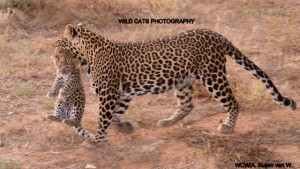 Also the two cubs do love to play with each other (both being “single kids”) and they do so daily now Solo is big enough to handle his bigger girlfiend Olive.
Also the two cubs do love to play with each other (both being “single kids”) and they do so daily now Solo is big enough to handle his bigger girlfiend Olive.
We will keep you up-dated about the leopard families, our observations


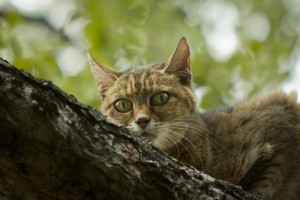
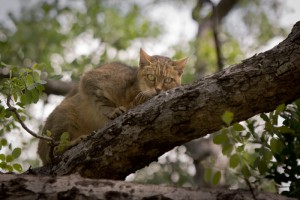
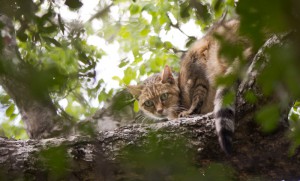
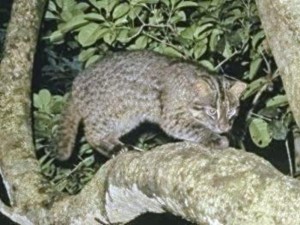

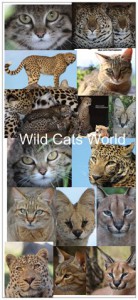 Like every ending of a year I like to take the opportunity to address a word of gratitude to all supporters of my foundation Wild Cats World, and all WCW projects, but also to the readers of the webmagazine Wild Cats Magazine. Especially a big thank you to all (symbolic) adoption parents and supporters donating generously in every other way, supporting our projects and amazing ambassadors of the African wildcats, Black-footed Cats, Caracals, Cheetahs, Leopards and Servals in our S.A. “Spotted Cats Conservation” project. A special thanks to Libor Rajm for continuous support of the Javan Leopard Release Program. Much appreciated!
Like every ending of a year I like to take the opportunity to address a word of gratitude to all supporters of my foundation Wild Cats World, and all WCW projects, but also to the readers of the webmagazine Wild Cats Magazine. Especially a big thank you to all (symbolic) adoption parents and supporters donating generously in every other way, supporting our projects and amazing ambassadors of the African wildcats, Black-footed Cats, Caracals, Cheetahs, Leopards and Servals in our S.A. “Spotted Cats Conservation” project. A special thanks to Libor Rajm for continuous support of the Javan Leopard Release Program. Much appreciated!